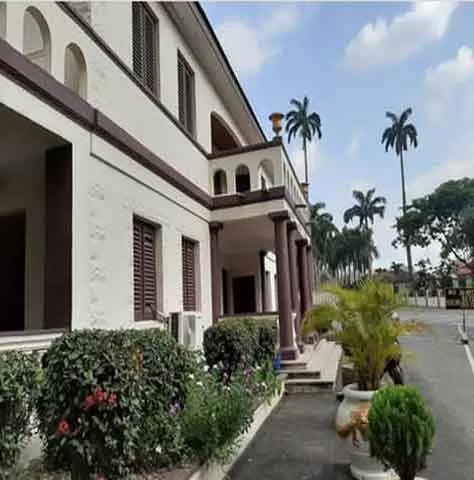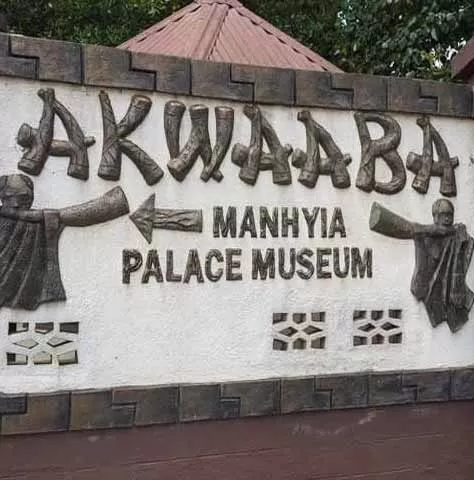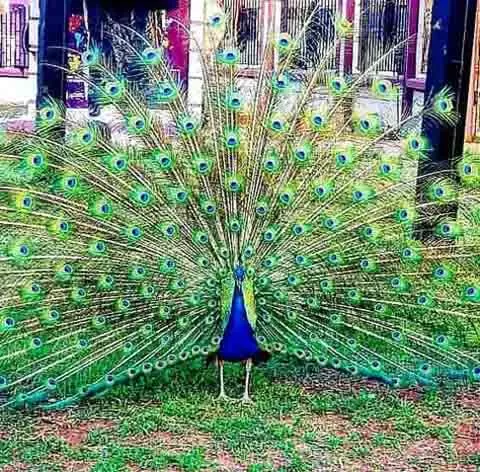The Manhyia Palace is the seat of the King of the Ashanti Kingdom (Asante hene) as well as his official residence and the site where the golden stool is located. This is the home of real culture from the Ashanti Kingdom.
The Manhyia Palace has a museum uniquely built in Ghana by the Asante Kingdom to honor their leaders and also project the rich Akan history and culture to the world. It is a relatively small Museum but stuffed with history larger and older than its size making a visit to the place a worthy one.
The Museum building is of great historical interest and importance as it also houses the Museum’s exhibits such as royal regalia, photographs, medals, furniture, drums and palanquins which are over two hundred years, a battle dress which dates back to 1900 and many objects of historical significance as well as effigies of all past kings and the current occupant of the Golden Stool.
Recommended reading…………. Okomfo Anokye Mystery Sword
The Manhyia Palace Museum was made inside the old home of Otumfuo Agyeman Prempeh I and Otumfuo Sir Osei Agyeman Prempeh II, the thirteenth and fourteenth Kings of Asante kingdom. This noteworthy building was reconstructed in 1995 at the expense of roughly twelve thousand Ghana cedis (GHc 12,000) to serve the purpose of a Museum.
The expense of renovation of the museum was met by contributors in real money and in-kind by companions and well-wishers of Asanteman and the King.

Being one of a kind in the West African sub-region, it is very popular for the rich and cultural preservation that has been built by the indigenous people from the kingdom to showcase or exhibit to the world.
The Museum building is of great historical interest and importance. It not only houses the Museum’s exhibits; it is itself an exhibit of the Museum. It was built in 1925 for Asantehene Agyeman Prempeh I, by the British Colonial Government, as his private residence when he returned from Seychelles after twenty-eight years in exile.
It was from this Palace that he ruled for his people kept his Stool the Sikadwa (the Gold Stool) vacant during the twenty-eight years he was away in exile and welcomed him back as Asantehene. To the Asante, therefore, the period that he was away in exile (1896 to 1924) was not an interregnum and to remove any doubt as to his status or their relationship to him, they steadfastly refused to allow their King to accept the building as a gift from the British Colonial Government, or to occupy it until they had paid for it.
The building, therefore, became, from the moment it was occupied by Asantehene Prempeh I. It was the Palace of Nana Prempeh I, and his successor, Otumfuo Sir Osei Agyeman Prempeh II, who reigned from 1931 to 1970.
The lower floor of the Museum has been preserved just as it was in the days of Otumfuo Agyeman Prempeh II and serves as a lasting memorial to his life and long service to the Asante Nation. Here can be seen photographs of many important events in Asante history, the first black & white Television to Asante Nation which dates back to 1965, the bronze head of Nana Prempeh II, books shelf containing a collection of books used by the Kings and a Sketch Map of Asante Empire.
The exhibits within the Museum include life-sized effigies representing Otumfuo Agyeman Prempeh I (1888-19931), Otumfuo Sir Osei Agyeman Prempeh II (1931-1970), Nana Ama Serwaa Nyarko (1945-1977), Otumfuo Opoku Ware II (1970-1999), Nana Afia Kobi Serwaa Ampem II (1977 to date), Nana Yaa Akyaa (1880-1917), Nana Yaa Asantewaa and Otumfuo Osei Tutu II (1999 to date), the reigning Asante King. Others include Regalia, photographs, medals, furniture, drums and palanquins which are over two hundred years, a battle dress which dates back to 1900 and many objects of historical significance.
The Museum was officially opened on August 12, 1995, by Otumfuo Opoku Ware II, the 15th King of Asante, as part of activities marking the Silver Jubilee of his accession to Asikadwa (the Gold Stool). The Museum is a two-story building with open verandas as a yard. A small outhouse was added in 1995 for use as the Museum Shop.

Now the Manhyia palace has become the major tourist attraction site and the main exhibition center of the historical cultural hub of the Asantes where tourist can explore and learn some culture from the Ashantis.
Inside the Manhyia palace are lots of artifacts or things which were used by the past king in the palace and others. Among the displayed artifacts relating to the Ashanti King Prempeh II include pictures of the king, the king’s war attire, ceremonial clothing, jewelry, protective amulets, personal equipment for bathing and dining, furniture, royal insignia and some fine brass weights for weighing gold.
You would also find the Ashanti war drum. This drum, used was as a weapon would make a deafening roaring sound like that of a lion or leopard which scares away enemies. Get to see a 300-year-old treasure bag which is forbidden for anyone to open.
Opening hours and entry fees
The Manhyia Palace Museum opens daily between the hours of 08:00 to 17:00 with a small amount of entry fee.
Also read about ….. Best Tourist Sites To Visit In Ghana
Thank you for reading this article.

